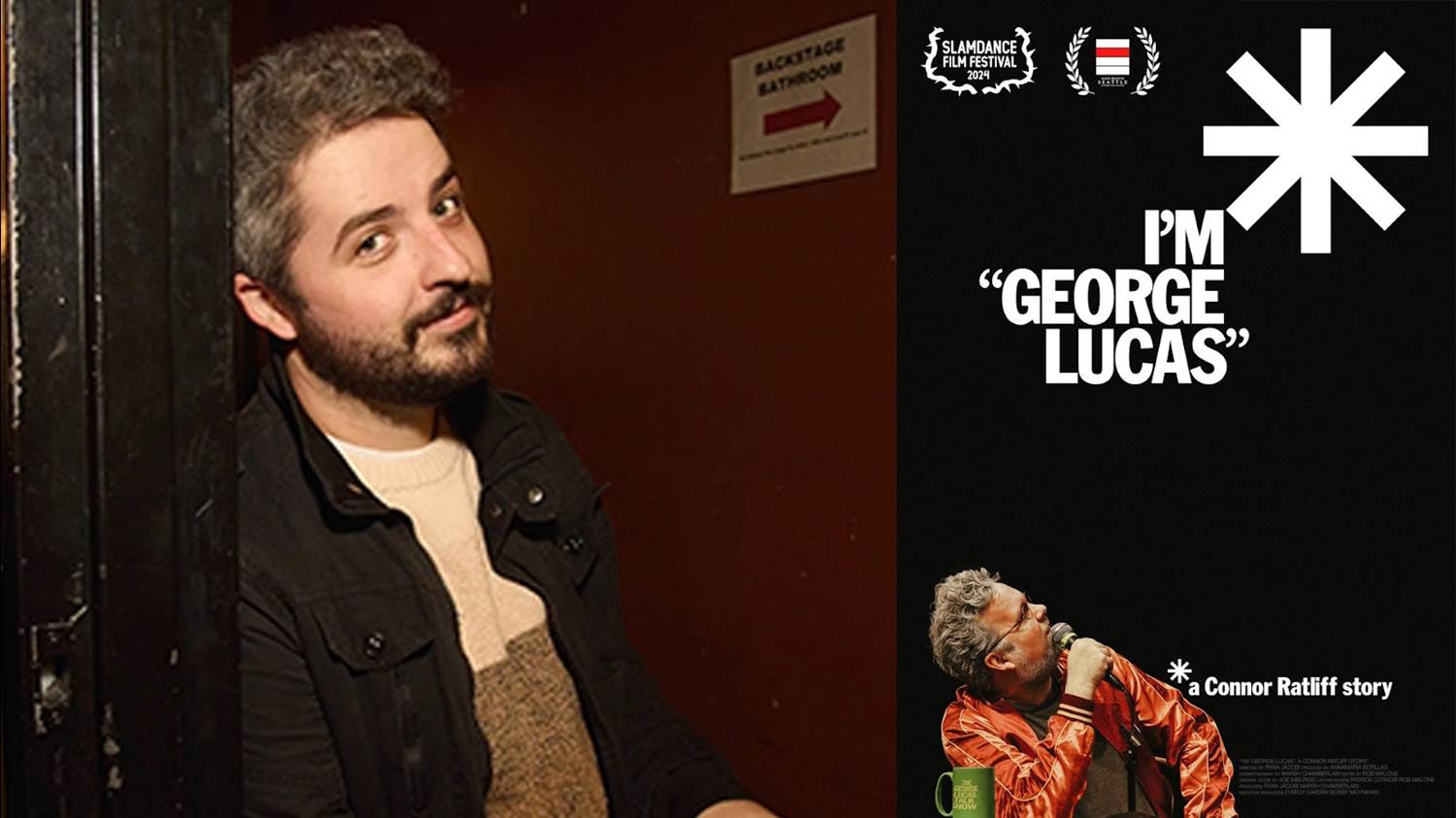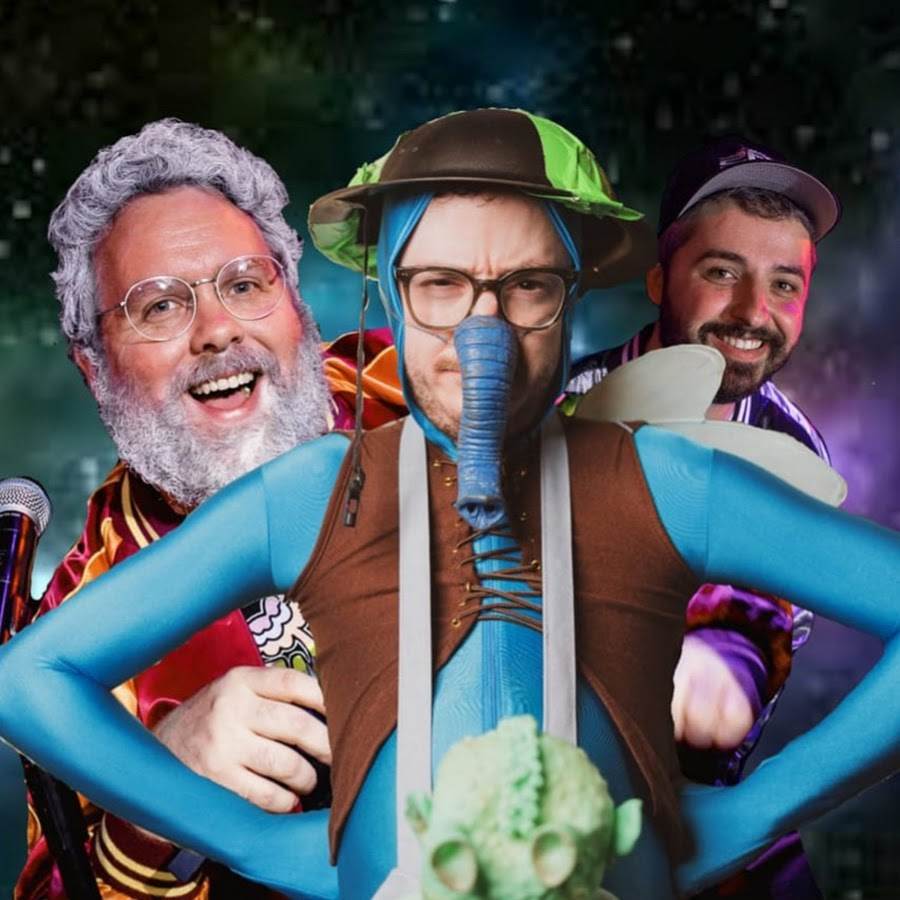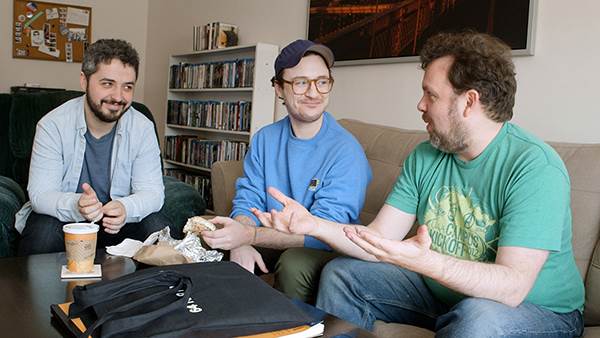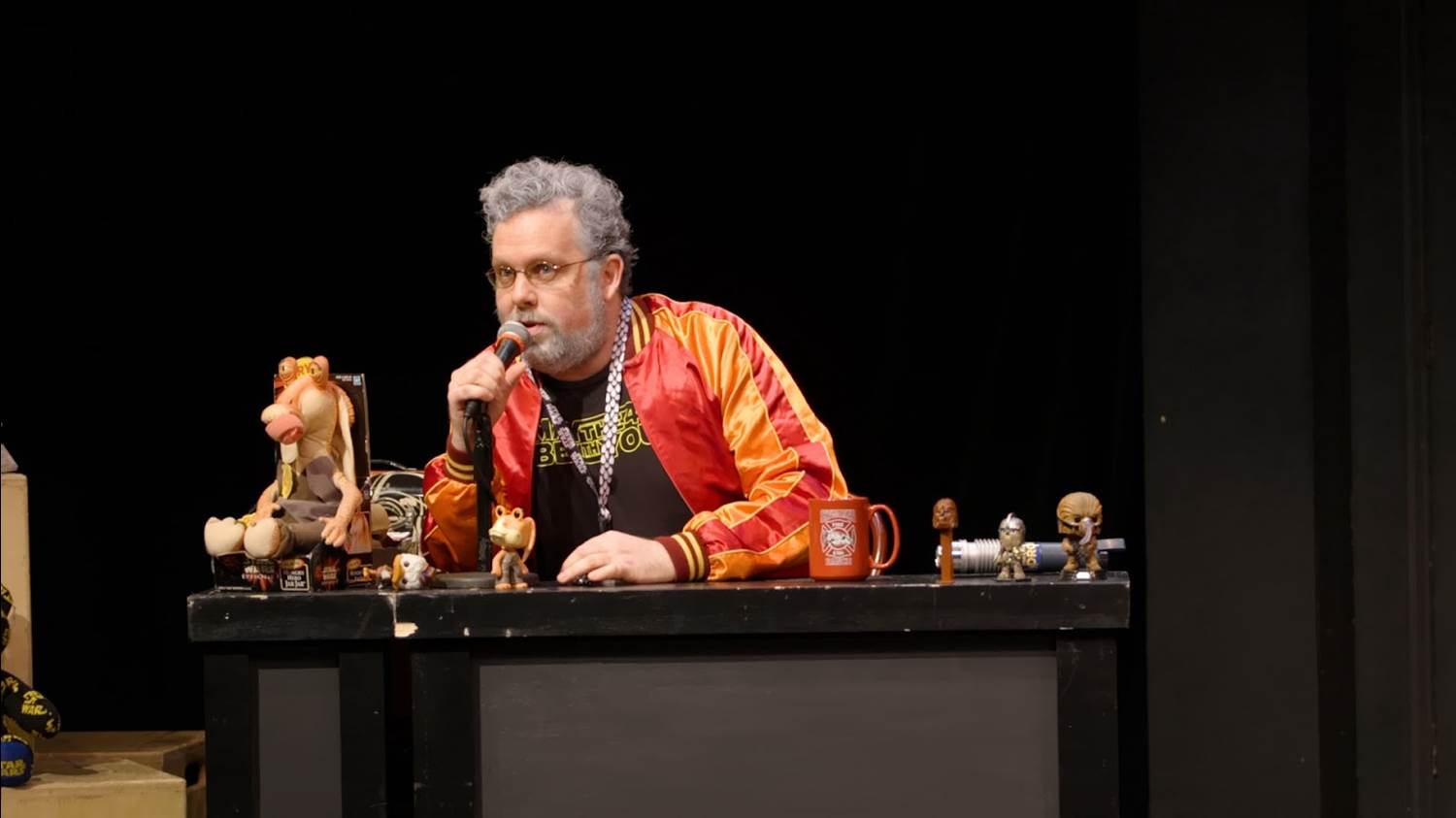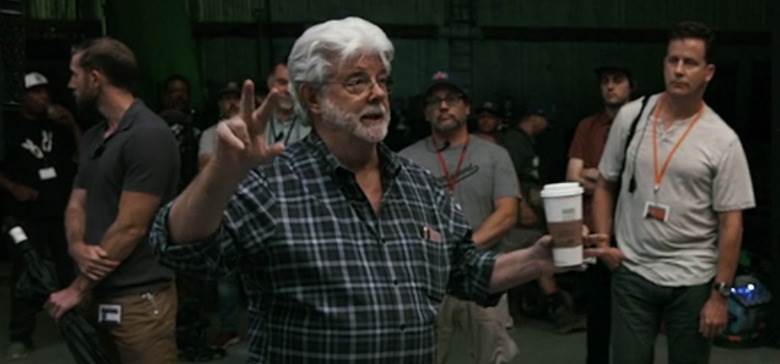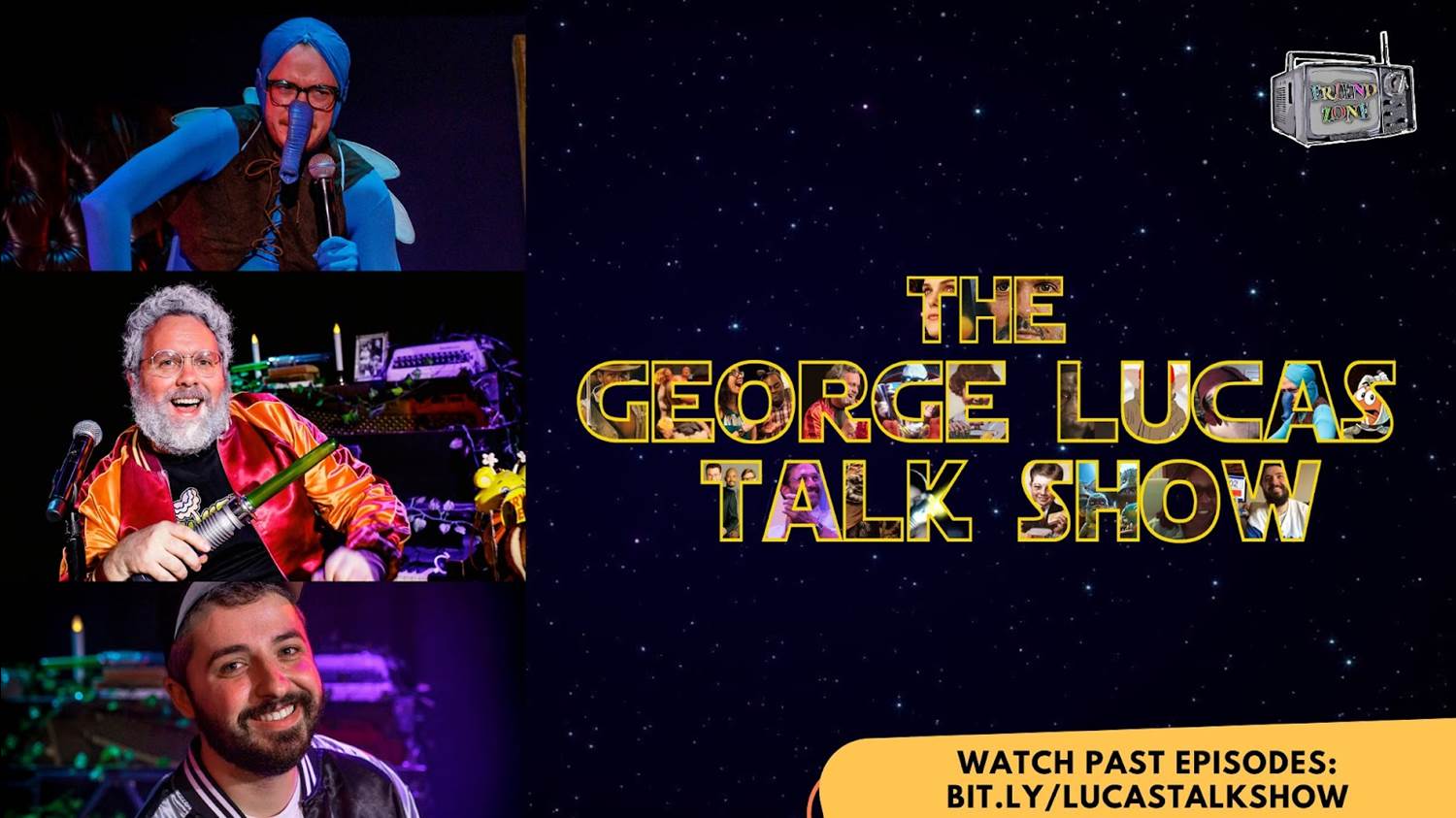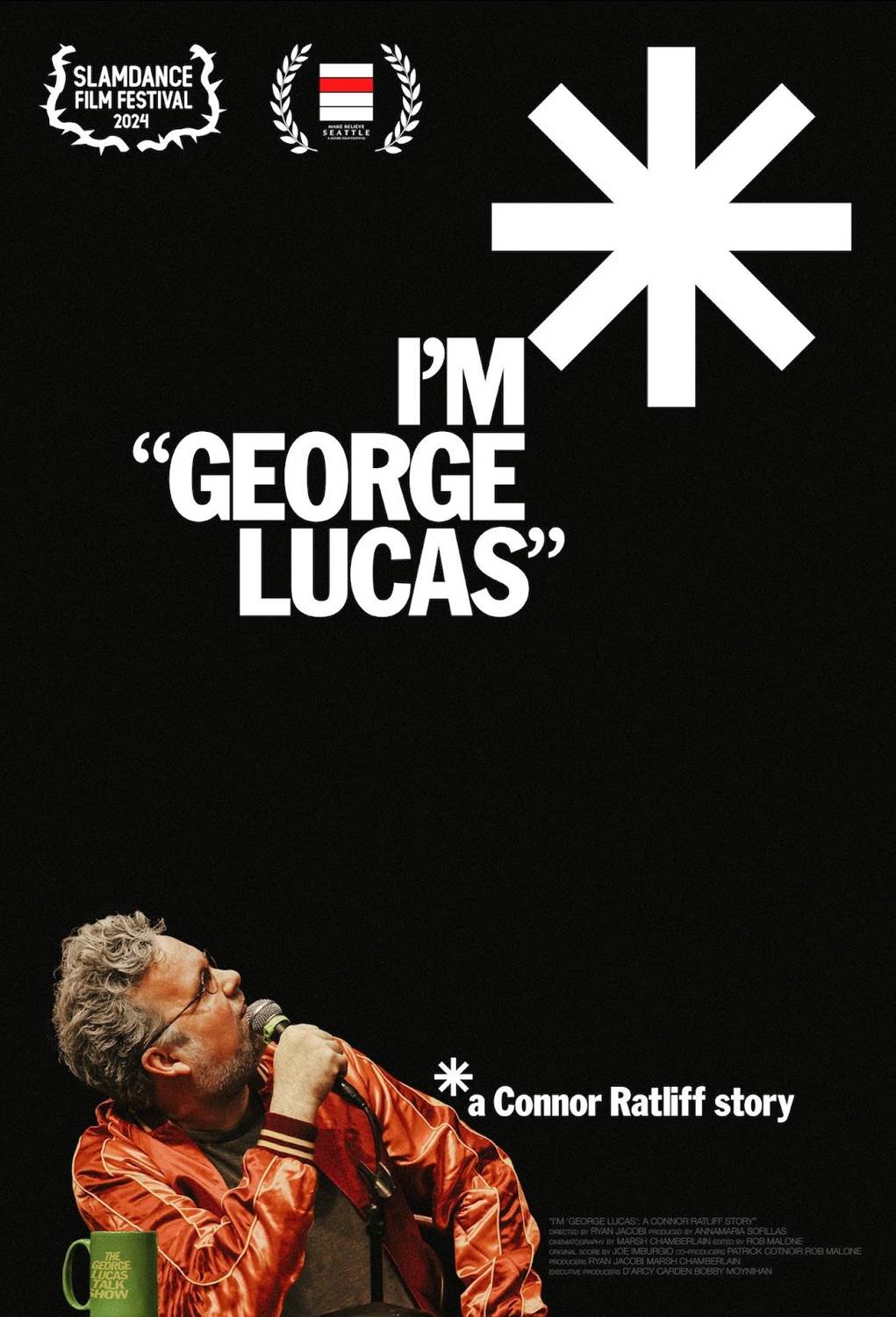Interview: Patrick Cotnoir from “The George Lucas Talk Show” Discusses New Documentary “I’m ‘George Lucas'”
Earlier this week I had the chance to watch and review the new feature-length documentary I’m ‘George Lucas’: A Connor Ratliff Story, and today I was able to speak one-on-one with its co-producer (and co-star) Patrick Cotnoir from The George Lucas Talk Show about his personal relationship with the Star Wars franchise and the behind-the-scenes story of how the doc came to be.
Mike Celestino, Laughing Place: The documentary doesn't really get into your personal history, since it focuses primarily on Connor, so I'm curious if you grew up on Star Wars as well.
Patrick Cotnoir: Yeah, I did. I grew up [in] northern Connecticut– pretty much the last town before Massachusetts– and I don't remember a time in my life without Star Wars. I've been trying to think recently when was the first time that I saw it, but my aunt was around when all the movies were first coming out originally, so she had a lot of stuff that she had left at my grandparents’ house. So it was a lot of me reading books or looking at toys or whatever it was that was left at their house. And then the first time I remember seeing it is the Special Editions, because I would have been about five [years old] when those came out– you know, going to Taco Bell and KFC and getting all the toys. The Power of the Force action figures were huge for me. That was my main introduction outside of the movies. But yeah, super into it– [I] was seven when Phantom Menace came out. So I was the perfect age for all of these things coming out– thank God I was born when I was.
LP: Tell me a little bit about your time and experience at Upright Citizens Brigade Theatre in New York. How did you get into producing comedy shows?
Cotnoir: I was going to college in Manhattan. I went to Pace University and the first weekend I was there, my friend knew I was a big comedy person and brought me to a show. It was one of those things where it just clicked. And you were like, ‘Oh, I guess this is where I'm going every weekend now.’ So I was going constantly starting in 2010, and started going to this show called The Chris Gethard Show, which was a weird alt-comedy call-in talk show thing that was on New York public access and then eventually went to cable. I had gone for a few weeks and– I say this with all the love in the world– this was a very low-rent production. You know, it's on public access, it's being shot in a studio that anyone can use as long as they just sign the paperwork. And I said to them, ‘I'm coming anyways. Can I just work on the show?’ Which is kind of an insane thing in almost any other scenario, but not for them. And they said, ‘Yeah,’ and one of the guys who was working on the show– both on camera and behind the scenes– was Connor Ratliff, who I'd also seen at UCB. I thought he was one of the funniest improvisers and comedians that I had seen live, and it was one of those things where I was like, ‘Oh, I guess I'm just going to go to everything that this guy does.’ I have a very obsessive personality. I don't know if that's coming out in this, where when I like something, it's like, ‘Oh, that is the thing that I like.’ [laughs] I started going to all the stuff that he was doing, and I heard he was doing this new talk show that was George Lucas-based.
I should explain to people what the show is. It's a talk show. Connor Ratliff plays George Lucas as if, in his retirement, he is now hosting a talk show, a regular talk show as [though] he's James Corden or Jimmy Fallon or whoever. The sidekick is Griffin Newman from Blank Check and The Tick playing Watto, and now I'm an on-air sidekick-slash-producer too. It was one of those things where, Star Wars was so big for me– Attack of the Clones and Phantom Menace were both really big for me. But by the time Revenge of the Sith came out, I think I had bought into the narrative that was going around of, ‘Well, these movies aren't good,’ even though I didn't believe it, I think. You know, if everyone's saying it, that must be the truth. I saw the movie early because my friend's mom worked for LEGO. The LEGO North American headquarters was [in] my hometown, so we got to go see the movie a week early. But that time in-between Revenge of the Sith and Force Awakens was sort of a dead zone a little bit. I still liked it and everything, but I wasn't watching Clone Wars every week and I wasn't keeping up with what was going on. So [The George Lucas Talk Show] is really what brought me back into that fold, and as much as I try to get back out, I can't. [laughs]
LP: What do you think is the appeal of The George Lucas Talk Show and why has it lasted for more than a decade?
Cotnoir: I mean, for so long– you know, 2014 through 2020, basically– you only knew about the show or knew really what it was if you were there in the room. We weren't really doing touring shows that often. We would do [New York] Comic-Con, but that was kind of it. And frankly, COVID was great for us, because we became a live-stream show and everyone was cooped up and able to sit down and watch six-hour live streams or whatever it was that we were doing week-to-week. It really elongated the life of that show, I think beyond what it would have been. I don't know how much longer it would have gone had COVID not forced us to open up into a new medium and exposed us to a whole group of people that had no idea what we are. I think people like it, though, because they can tell that we care about it and they can tell that we're interested in the things that we're talking about and that we like each other. I think that helps a lot. We have fans that are Star Wars fans and we have fans that don't care about Star Wars at all, and I love that. Connor talks about it in the documentary, but [at] the December 2019 show, he got to the end and he goes, ‘There's a new Star Wars movie coming out in two weeks and it's the last one and we didn't mention it at all during the show.’ That's what I love about the show, is that sometimes we just don't talk about Star Wars and that's totally fine because we built this weird thing that there's so many other things we like to talk about. Now that we've done 500 hours since COVID started, we can talk about 25 things and they all make sense within the context of this show. So I think that's what people like: I think they like Connor and they like Griffin but then they also like this weird, strange, [Pee-Wee’s Playhouse]-esque version of reality that we have built within this show.
LP: How did the idea for the documentary first come about?
Cotnoir: We didn't produce it. We had guys come to us, because you're never supposed to make documentaries about yourself– that's a big rule of documentary filmmaking: it's better to have someone else looking in, rather than us looking at ourselves. So in November [or] December 2018, I got a DM from these guys Ryan Jacoby and Marsh Chamberlain, who are filmmakers. And they basically said, ‘Our last movie was about suicide and intergenerational trauma in the Alaskan Inuit culture, so we need to do something light and uplifting. We've been coming to the show a lot and we really like it. Can we just film a show?’ That's all they wanted to do– professionally film a show, so we were able to upload it online and people who were not in New York could see what this thing was. And we said, ‘Absolutely. You want to do it for free? Yeah, 100%. That sounds great.’ So we had dinner with them, and they were basically like, ‘We were thinking: what if we did a short fake behind-the-scenes thing where this is actually George Lucas figuring out how to make a [talk show]. You know, a Larry Sanders / 30 Rock-esque mockumentary about real George Lucas doing this. And Connor was basically like, ‘That's too much work. I don't want to do that.’ Little did he know, we're now five and a half years later and we're still talking about it. [laughs] But he was like, ‘The amount of work that it will take in order to actually make that funny is so high. I don't want to make a subpar thing and then have this be the first thing that a bunch of people see from the show, and they go, ‘Well, that wasn't funny. Why would I watch the show?’
So he said, ‘What you can actually do, if you want, is you can shoot a short making-of real documentary about making the show. And we would definitely do that. So they said, ‘Yes, that sounds great.’ We did a Kickstarter in early 2019, [and] raised a decent amount of money to shoot a short. And they did that– they shot for all of 2019 and into early 2020, and they were basically done. They had Griffin's interview and a few little things here and there they wanted to get, but they were done. And then everything shut down, and the show changed into what it became during COVID, which was more of a live-stream format thing. And it turned into, ‘Oh, well now there's this new wrinkle in what this show is. I guess we should add more about what it is post-lockdown, so there's this nice little epilogue now. But they still wanted to make it a short– they were still like, ‘This is going to be 25 minutes.’ And we were basically like, ‘If you make this a short, we will have felt like you wasted the last year and a half of our lives, because you shot like 70 hours of footage or whatever it is– an insane amount of footage. You've got to make this a feature.’ So we did another Kickstarter and we were able to make enough to finish it off the right way and go to festivals and stuff. It's been a long journey, but I'm happy with how it came out and I'm happy that people are able to see it now.
LP: As you said, most of the footage in the documentary came from 2019 and 2020, going into the pandemic era. Why did it take four years from that point to be released?
Cotnoir: It's a great question. [laughs] They finished editing it in probably 2022-ish, somewhere around there, and then the festival circuit is hard. Getting into festivals is difficult. It took a long time to get into a festival, first of all, because we wanted to premiere it at a good one– a known one– and get it into a good spot. So we got into a festival in mid-2023 or so, and then once we got into that first one… once film festivals start to see that you got into a good one, then they want you in their festival. That's kind of how that world works, where [it’s] like you're dating someone cool and now everyone's interested in you. It's that kind of thing. So once we got into Slamdance, which is in Park City during Sundance– it's the under-a-million-dollar film festival– that was when people started to take notice and we got into DocNYC and Make Believe Festival up in Seattle… a whole bunch of festivals, which was really great. But that was the big holdup– waiting for it to get finished editing, waiting for those finishing funds to come through via Kickstarter and getting the rest of the stuff shot, and the festival thing just held it up a while, which [was worth it] because we wanted to get it into good spots. We were happy to wait, but it was just a matter of making sure it got into the right thing. I also think now it's almost more interesting because it feels so long ago that a lot of people who know the show now didn't know it at that point, and are able to see what it was like. But also everyone is able to see what it's like to just put on a comedy show without any famous people as part of the creative team in New York pre-COVID. It's a totally different landscape in New York now as far as live theater [goes]. So it's this weird time capsule that I enjoy.
LP: Beyond your role as producer, booker, and eventual cohost of the show, what did your credit as co-producer of the film entail?
Cotnoir: Co-producer is kind of a catch-all [credit] in the doc world. It can mean a lot of different things, but in this specific [instance] I was the go-between between the actual show and [the filmmakers of] the doc. Whenever they needed something from the show, it would go through me. There's so much [archival] footage of the live shows from 2014 through 2019, before they started shooting– that was all me sitting in the front row with the camera on my chest, just shooting it for posterity, just so we had it. So it was [the process of] going through that footage and getting the good stuff for them out of that and getting all the people who are doing the talking-head [interviews]– connecting them with the documentary filmmakers and being like, ‘I think these people would be able to talk about this. They know Connor, they know the show, blah blah blah.’ So it was just being the guy from the show who is not really the focus of the doc, being able to be like, ‘Here's all the things you need that we have that can help you make this the best thing that it can be.’
LP: And how did you decide on the interview subjects you did line up for this film (like Bobby Moynihan, other UCB performers, and Connor's parents)? Why were these the best people to tell this story?
Cotnoir: It was a lot of Connor's friends, and a lot of people who had either done the show or had been to the show a bunch and that we thought were good talkers. Frankly, you need someone who can talk for a while because you want to be able to edit down the key points into something in the movie. The people that did it were people that we like, and people that we trusted to tell the truth about the show and about Connor, and really speak their feelings in a way that would be able to be distilled into a five-second sound bite in the movie. It's interesting, because I think there are [many more] people who in some cases were a big part of the show pre-COVID, and there are so many people that are a big part of the show now that I'm like, ‘Oh, I wish we were able to talk to them.’ But, you know, docs are expensive and flying out to L.A. to do more shoots is cost-prohibitive for a lot of people. But I'm glad that we got the people we did because I think they can paint a full picture of Connor– between his parents who know him, obviously, at a different level than Bobby does, or J.D. Amato, who's a friend from UCB and a friend from the Gethard Show. They all know different facets of his life, and I think they were able to paint a broader picture of this guy who is still sort of an enigma– an interesting guy who keeps a lot of his life to himself.
LP: In the documentary we see a couple other Star Wars creatives like author Charles Soule and voice actor James Arnold Taylor on the show. As a booker, how often do you approach this kind of Lucasfilm-adjacent talent, and how hard have you tried to get Mr. Lucas himself on The George Lucas Talk Show?
Cotnoir: We get a lot of people [from Star Wars]: Ahmed Best did it, a lot of the voice talent and people who worked at Lucasfilm– puppeteers, Mike Quinn, people who are around. A lot of them have done it. We try whenever we can. You know, the show is a Star Wars show primarily, but at the same time it's so much more than that. It's not always the main focus of discussion, so when it happens it's great, and we love talking to them, but it's definitely not the [only focus]. Anthony Carboni, who used to host The Star Wars Show [on YouTube], is an additional cameraperson on this. He shot some of the interviews for us, which is great. But we're friends with a lot of people [at Lucasfilm], and it's great because they're all very nice and very supportive of what we do. It's a nice company, and we like them.
We've tried to get George– we've tried a few times. We do shows at San Francisco SketchFest a lot, which is a comedy festival that happens every year, and obviously he's not always in San Francisco nowadays. He's got houses around the country that he spends [time at]. He's in Chicago a lot, he's in L.A. a lot, that kind of stuff. But we always reach out– we've done it three times now, and all three times we've gotten responses that are like, ‘We want you to know we tried. We talked about this. This was a real topic of conversation, and we want you to know that,’ which is always very funny. It's never a boilerplate response. It's always a, ‘We hope that you and Connor and Griffin have a wonderful show. The George Lucas Talk Show is great.’ It's a real thing, which is amazing. So he's not done it yet, [but] hopefully at some point. It would be very interesting, because I think we frankly don't want to talk to him about Star Wars stuff. You know what I mean? He's talked about that to death. We know why he made Bib Fortuna. Who cares? Let's talk to him about all the interesting stuff that he never gets to talk about. That's the real goal, and that's what we want to eventually get to [do] with him. It was funny– the last SketchFest we did was in January and he couldn't do it because ‘he was out of town,’ is the response we were getting. And then the next day, all of our phones blew up– people were texting us because the night before he was hosting a fundraiser at his home for President Biden with the president in attendance. And we were like, I mean, what a good excuse. It's almost the perfect excuse.
LP: What is your current relationship with the Star Wars franchise? Are you a fan of the stuff that Lucasfilm has been putting out in the Disney era?
Cotnoir: I definitely keep up with it the most [out] of the three of us. I'm fairly up to date on [Star Wars] comics, I'm big on the audiobooks for the [novels]-- I have not heard or read all of them, by any means, but I'm trying to work my way through The High Republic right now. [I] watch all the TV stuff, watch all the animated stuff. I'm all in, baby. [laughs] You got a Ponda Baba action figure at arm's reach right in front of my computer. I'm all in.
LP: What are your hopes for the documentary at this point and what does the future look like for The George Lucas Talk Show?
We just signed a distribution deal to get it on more streaming places [where] people watch stuff. I don't know exactly where it's going to end up because [it’s] not my movie. It's their movie, so I'm letting them handle all that. But the thing that I am working on is I want [a] Blu-ray out– [I’m] working on the Blu-ray. We have so much bonus stuff, and you can get bonus stuff on the website when you rent it, but we have so much more stuff. I want [the Blu-ray] packed to the gills– I want it to be really worth it. The thing that Connor and I are really pushing for, because we think this will entice people to buy it, is we want this movie to have more commentaries than any other movie has ever had on it. So we have a lot of people locked in and confirmed saying they will do commentaries; he and I are prepared to do 15 or however many we need to do. I think that's I think the path of this– just getting people to see it, and then having physical copies is so nice because it's also something that we can bring to shows in the future and sell. You know, it's something nice for the merch table. It's nice to have other things to be able to bring in and get out into the world.
[As to the future of the show], the nice thing about the place where we are right now is that once lockdown lifted up, [we] sort of took a break and recalibrated because we were doing the show for at minimum four hours a week for like a year and a half. And that is a lot on your energy levels. The thing that we decided once we got back into the world was that we can do the show whenever we want in any format that we want. It can be a live stream, it can be a live show, it can be a message in a bottle attached to a pigeon– we can do [it] however we want to do it, and that's totally fine with us. We can do 18 shows a year or one show a year and it doesn't. affect how we feel about the show. The goal is to just keep doing it while it's fun, and when it's not fun anymore we'll stop. I hope that doesn't happen for a while. I still like doing it, I think they still like doing it, and it's just a matter of doing it at the pace that is comfortable for all of our mental health– comfortable for something that makes it still fun and entertaining. It is an exhausting show to do sometimes, especially [because] they [have] to be in costume and Connor's got to spray up his hair– it's a labor sometimes. But also at the same time, we're having fun and we're hanging out with our friends and we're getting to meet cool people. And this show has led to other gigs for all three of us, which is kind of also the best thing about it. We're not really making enough money on the show to pay the bills, but if someone watches the show and likes it and then hires us for something else because they like that show, then great– the whole thing was worth it. I don't know what the future is in terms of how long it's going to go, but I know that we're going to just find new and exciting ways for us to keep it going.
LP: Can you just point people in the direction of where they can find the documentary?
You can find the documentary at ImGeorgeLucas.com, and that's got the links to the VOD. When new ways [become available to purchase it or watch it, you'll be able to see those there, too. Something else I want to plug, because I assume your crowd will love this, is like a month and a half ago at Dynasty Typewriter, which is the theater in Los Angeles, we did a live reading of The Phantom Menace for the 25th anniversary, and it was an all-star thing. Haley Joel Osment was Anakin, Tony Hale was Qui-Gon, Bobby Moynihan was Darth Maul and Yoda– a truly insane group of people. It's so much fun, and it's truly one of the things I'm the most proud of doing. It's me and the Star Wars Minute guys narrating this wild all-star group of people doing this. So if you go to NabooMovie.com, you can watch that.
I’m ‘George Lucas’: A Connor Ratliff Story is available for rent or purchase right now. The George Lucas Talk Show is available on YouTube. The above transcript is an abridged version of my interview with Patrick Cotnoir, but the full audio version will be made available in this week’s upcoming episode of Laughing Place’s Star Wars podcast “Who’s the Bossk?"



